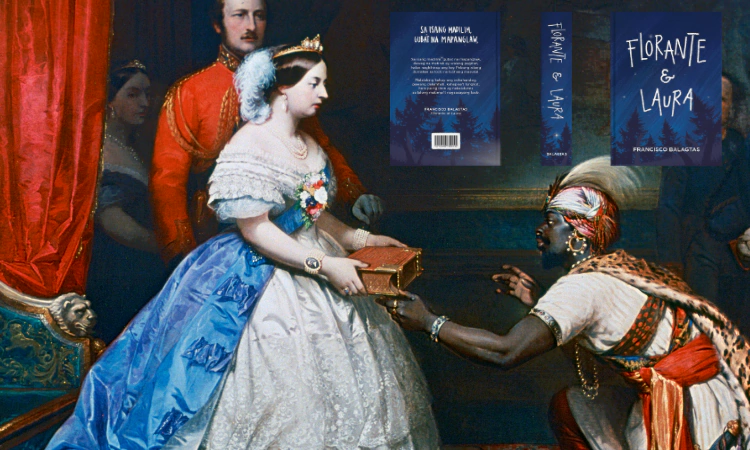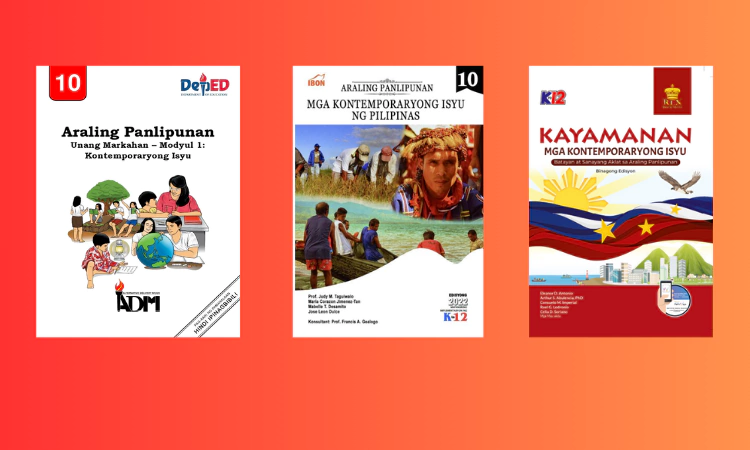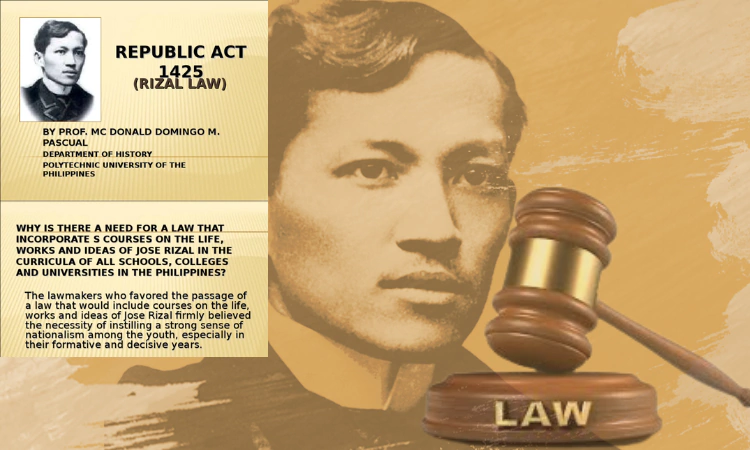One of the Philippines’ most enduring stories, Florante at Laura is considered a literary classic and a historical and cultural masterpiece.
It was written by the 19th-century poet, Francisco “Balagtas” Baltazar during his imprisonment.
Balagtas dedicated this with – a type of Filipino poem consisting of twelve syllables and four stanzas – to his sweetheart, María Asuncion Rivera, whom he nicknamed “M.A.R.” and is referenced to as “Selya” in the dedication “Kay Selya” (“For Celia”).
Florante at Laura Description: What’s the Story About?
So, what is Florante at Laura about?
In the Albanian Forest
The story begins deep within a dark, gloomy forest. Francisco Balagtas wrote the poem “Gubat na Mapanglaw” to describe the melancholic forest.
Florante, a duke of the Kingdom of Albania, is tied to a tree, lamenting the death of his father, Duke Briseo.
He is driven mad by the thought that his beloved, Princess Laura, has fallen into the arms of his enemy, Count Adolfo, son of Count Sileno.
Nearby, two starving lions keep watch and try to attack Florante. He is saved, just in time, by Aladin, a Persian prince who happens to be in the forest at the same time. Weak and bewildered, Florante faints.
The merciful soldier nurses Florante to health. Upon recovery, Florante is initially taken back by Aladin who he considers as an enemy due to his Islamic faith. After a few explanations are made, Florante is grateful and begins to tell his story.
Florante’s Tale
The son of a princess and a royal adviser, Florante grew up in happiness and showered with love.
He liked to play games when he was six years old and was almost captured by a vulture that entered their mountain cottage, which was also followed by the attack of a falcon. He was saved by his cousin Menalipo, an archer from Epirus.
When he turned eleven, his parents, Duke Briseo and Princess Floresca sent him to Athens, Greece to study under Antenor, a renowned teacher.
There, he met Adolfo, a fellow countryman, the brightest student in their school. After five months of studying Astrology, Philosophy, and Mathematics, Florante surpassed Adolfo’s capabilities, talents, and intelligence, gaining popularity.
While performing during a school contest, Adolfo attempts to kill Florante because of his jealousy of Florante’s popularity. Florante’s friend, Menandro, was quick enough to intervene.
Adolfo headed home to Albania after his failed attempt. One year later, Florante received a letter from his father, announcing the death of his mother. Florante fainted for 2 hours from the grief.
Seven months later, Florante receives a second letter from his father telling him to return to Albania. Menandro, unwilling to be separated from him and allowed by his uncle Antenor, he accompanied him on his journey.
Upon his arrival to Albania, an emissary of the kingdom of Crotona requested his assistance in the incoming war against the Persians.
Florante had not the will to refuse, for the King of Crotona was his grandfather. During his stay in Albania, Florante was invited to the royal palace and was glamoured by Laura, the daughter of King Linceo. He stared at her for hours forgetting about the war and then lost.
Months later coming to the aid of Crotona, Florante fought with the Persian general Osmalik for five hours, finally slaying him in the end.
He stayed in Crotona for five months before returning to Albania to see Laura. He was surprised by the sight of a Persian flag waving atop the kingdom. He recaptured the palace and saved his father, the King, and Count Adolfo.
He also saved Laura from being beheaded at the hands of the Emir and was declared “Defender of Albania” for his bravery, deepening Adolfo’s envy and hatred.
Florante protected the kingdom once more from the Turkish forces under General Miramolin, an acclaimed conqueror.
This took place in Aetolia, where he later received a letter from his father summoning him back to Albania.
He left his troops in the care of his friend, Menandro, and upon returning, he was ambushed by 30,000 soldiers under Adolfo’s orders and was imprisoned for 18 days.
There, he learned of the tragic fate of his father and the king who was beheaded under Adolfo. Florante was then exiled into the forest and tied to the tree.
Aladin’s Tale
After Florante finishes his story, it is Aladin’s turn to recount his life. He first introduces himself as Prince Aladin of the Persian kingdom, son of Sultan Ali-Adab.
While walking through the forest, Aladin tells about his fiancée, Flerida. Unbeknownst to him at that time, his father also desired Flerida. After returning home from a battle (revealed to be the battle of Florante and General Osmalik), Ali-Adab imprisoned the Prince, using the abandonment of his troops as the reason, and the eventual loss made the latter order a decapacitation of Aladin.
In a turn of events, Aladin was released by a general on orders from his father, with the constraint that he may never enter the kingdom again. Heartbroken, he unknowingly walks to the forest where Florante was tied up.
Reunion and Peace
Aladin’s speech is interrupted when they hear voices. A woman narrates her escape from a kingdom and a marriage.
She speaks of her search for her beloved, a search which lasted six years. She shares that while deep in the forest, she heard cries for help, and upon finding a lady about to be raped, she uses her bow and arrow to kill the assailant.
The woman introduces herself as Flerida.
The lady saved by Flerida is revealed to be Laura, who begins to tell her story. While her love was away at war, Count Adolfo used deceit to gain popularity and turned the people of Albania against their king.
Count Adolfo then rose to the throne, forcing Laura to be his queen. An army under Menandro, Florante’s childhood friend, was able to overthrow Adolfo from power. Seeing all was lost, Adolfo fled into the woods with Laura as his hostage.
After hearing all this, Florante and Aladin reunite with their loved ones. Florante and Laura return to Albania to rule as king and queen.
Aladin and Flerida returned to Persia, where Aladin became the new sultan as his father died of depression because Flerida had left him.
Aladin and Flerida are then baptized into the Catholic faith, and the two kingdoms live in harmony and peace.
Florante at Laura Features
Florante at Laura is written as an awit – a type of Filipino poem consisting of twelve syllables and four stanzas. It has the following features and characteristics:
- four lines per stanza;
- twelve syllables per line;
- an assonantal rhyme scheme of AAAA (in the Filipino manner of rhyming described by José Rizal in Tagalische Verskunst);
- a caesura or pause after the sixth syllable;
- each stanza is usually a complete, grammatically correct sentence;
- each stanza has figures of speech (according to Fernando Monleón, Balagtas used 28 types in 395 instances throughout the poem.)
Florante at Laura Book Reviews
Below are reviews from people who have read Florante at Laura:
“I like the storyline and also the characters of Florante at Laura. Florante is an awesome character as well as the other characters. I HIGHLY RECOMMEND THIS BOOK for all those people who have a lot of time to kill. THIS IS HISTORY AT ITS FINEST.” – Nori
“Amazing and Creative. Thank you Francisco “Balagtas” Baltazar for making this book To Maria Asuncion Rivera (Selya) I hope you read this because it’s about you and your love story to him.” – Andrei
“The Florante at Laura story is rushed yet is very slow, there are so many plotholes that aren’t addressed and when it tries to be humorous it just doesn’t work cause the comedy sense feels dated, it is very Hodge podge and things happen from nowhere with no buildup yet the actual story pace is so slow you can skip the whole book to the last few chapters, or better just not read it all.” – Gabriel
“Although Florante at Laura’s book/poem was written in the late 19th century, the thought in it is appropriate and applicable up to the present times. Excellent reference material to read before engaging in a talk.” – Dacuycoy
“A classic poetic Filipino Romantic Novel. Inspired by the love life of Francisco Baltazar(Francisco Balagtas), this story captures the history of the pre-holy wars and the hearts of the readers that read this novel.” – Anson
“This book Florante at Laura is of great help to students like me to be more knowledgeable about how good Philippine literature is.” – Johanna
“This book is filled with good moral lessons that are necessary for the Filipino youths.” – Romeo
“Francisco Balagtas was a great writer. Magaling siya. I respect his works. For me, isa ito sa mga books na pwedeng ipagmalaki. this is part of our history.
BUT.. As a Grade VIII student, because of the “deep” words, it is hard to understand. Hindi ako against sa pag-aaral nito but I think it is not applicable to study by teenagers.
Yes. Let us say na maganda nga itong basahin at pinag-aaralan nga talaga nila. But the story and it’s format.. maraming teenagers ang napipilitan lang talagang basahin.
Marami. I am not reffering to ALL. I am reffering to few teenagers. Nasa modern world na tayo. Some words of Florante and Laura, especially some “deep” words ay hindi na ginagamit sa present time.
Kahit hindi natin sabihin, nahaluan at na-impluwensyahan na tayo ng western culture. Hindi ko man sabihin but when I finished reading florante at Laura parang nahilo ako.
Plus the fact na some of the parts are hard to understand. But it doesn’t mean na ayaw ko sa Florante at Laura. I am just saying my thoughts. Kahit some are negatives. At last, Florante at Laura. A great book. Part of our history.” – Gabriel
“The first and only lyric poetry that I have read, but surprisingly good and well-crafted by one of the best Filipino authors of Philippine literature.
The love story of Florante and Laura in a time where barbarianism is the culture, allows the readers to know and feel how it is difficult for lovers to end up in each other’s arms.” – JoPaul
“I understand this epic poem is a classic, but I found it unsatisfying. Yes, the poem (translated by JP Villarica) has rhyme and rhythm, but I could not identify the motivation (as described in this recent essay by Siddhartha Mukherjee).
Why did Balagtas choose to put in verse an ancient story of the Greek Empire as opposed to the Philippines? And of all classical stories, why this particular one?
None of the characters is memorable, and the themes of love and interreligious conflict are underdeveloped.” – Leslie Ann
“The first time I read this was back in high school. I didn’t understand it at that time. All I know even after reading it and passing the 2nd year Filipino subject is that it is a story of star-crossed lovers Florante and Laura and how their lives intertwined with that of Alladin and Flerida.
After nearly 20 years, I’ve got a chance to re-read this epic poem. After the awe-inspiring feeling of reading a pure and undulated tagalog which hit me for the first 15 minutes, I realized that the highly adored poem is nothing more than legalized medieval fairy tale.
The reality that this mandatory read for all high school-age Filipinos is so un-original left me feeling a bit disappointed. Still, i’m giving it four stars for the sheer experience it gave me of reading again in pure unconventional tagalog after two decades!” – Sarah Jean
“I think everyone in the Philippines has read this Florante at Laura book, although in an objective, academic way; the reason being that this is a compulsory course to be taken during high school.
I believe only a few have read this on their own or understood and appreciated its subtle blends of love and other emotions. For you to understand this book, read it outside class hours and the bondage of homework and academic needs.
Try to see how beautiful this Florante at Laura book is. It will sound too “old” and “archaic” the first time but when you see the central thought of the book, you’d surely reconsider what you said before.” – Gabriel John
Florante at Laura Price: How Much Does the Book Cost?
Depending on whether you buy the paperback or hardcover version – and depending on where you buy it from – the Florante at Laura book costs around Php 50 to Php 200+.
Where to Buy Florante at Laura Book
You can find the Florante at Laura book in most bookstores, as well as online





